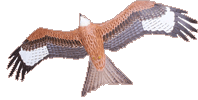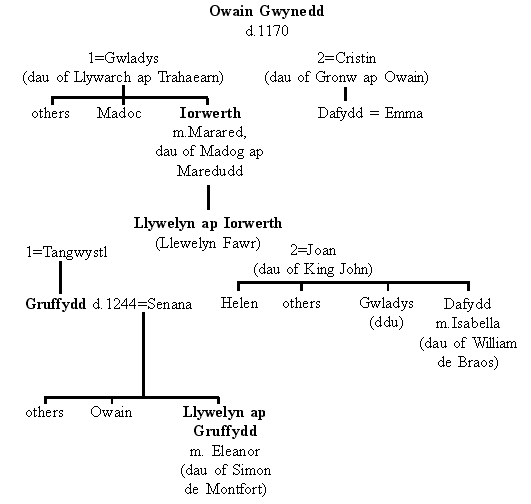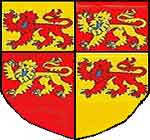Home | The Town | Castle Intro | Castle | Llywelyn | Links

Builth and Llywelyn ap Gruffydd
Llywelyn ap Gruffydd and his death near Builth
Llywelyn ap Gruffydd was known as
the last native Prince of Wales, and he was killed near Builth in
1282. A memorial was erected at Cilmery, (or Cefn-y-bedd) to the
west of Builth, said by many to be near the spot where he was
killed. The original memorial erected by Squire Blyth in 1902,
was dismantled and incorporated in the steps leading the monument
site, and a large monolith erected in its place in 1956. The
circumstances of Llywelyn's death are unsure, and there are
numerous tales, myths and legends surrounding it.
One tale has it that he tried to get access into the castle, was
betrayed, and turned away, and after visiting a local blacksmith
to have the shoes of his horse turned backwards, so as to fool
the following troops, he hid at Aberedw (A cave locally known as
Llywelyn's cave is in a cliff face behind Aberedw village and
castle). He then retraced his steps and was captured and
killed.
Another version has it that thousands of Welsh troops were
killed, possibly in an area now covered by the golf course, and
Llywelyn was killed somewhere around Cilmery or Llanynis, either
by contact with a stray English patrol, or by being betrayed by a
priest or monk (or again by someone dressed in clothes of the a
monk). Yet others say he was killed by a special force of English
soldiers who knew well his identity. Probably the only common
elements are that he was killed by English soldiers, beheaded,
his head was taken to London and paraded through the streets.
Later research indicates his body was recovered and taken for
burial at the monastery of Abbey-cwm-hir a few miles away in
Radnorshire. Again there are others who claim his body was buried
in his native north Wales.
Family Tree of Llywelyn ap Gruffydd
and Coat of Arms


Gruffydd had married Senana in 1244, and from this marriage one of the children was Llywelyn ap Gruffydd who first became the Prince of Gwynedd and then declared himself Prince of Wales, a title and position recognised in 1267 by Henry III. However, on the accession of the new king, Edward I, it all went wrong. Edward wanted the whole of Britain under his control, and with superior forces he forced Llywelyn to accept conditions which were humiliating, and giving him control of only a small part of Gwynedd. The new king then went on to reinforce his ideas by the building of castles at Flint, Aberystwyth, and Builth.
Llywelyn, humiliated but not defeated eventually lead an uprising against the rule of King Edward I, and after several successful battles Llywelyn ap Gruffyd was killed in 1282 near Builth. Although others continued the battle, it wasn't until the start of the 15th century that Wales was again united under Owain Glyndwr, who was the last Welshman to lay claim to the title, PRINCE OF WALES.
The leaflet (Self drive tour - places in central Wales connected with the death of Llywelyn ap Gruffydd, Prince of Wales 1256-1282) published by The Abbey Cwmhir Heritage Trust gives comprehensive information on Llywelyn and his death.
Home | The Town | Castle Intro | Castle | Llywelyn | Links
All photogaphs and content copyright © 2005 P. Jones